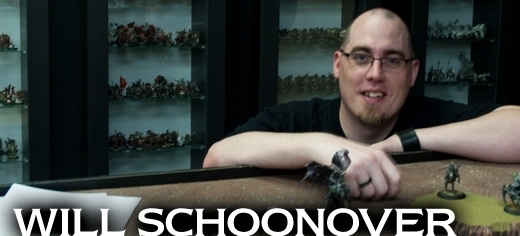
Insider 7-18-2014

Over the next few weeks as we approach the release of LEVEL 7 [INVASION], I’d like to explain a bit about the process that led to the creation of the third game in the LEVEL 7 line.
For those of you unfamiliar with the world of LEVEL 7, it is a survival-horror setting based on modern UFO conspiracy theories. The first game, LEVEL 7 [ESCAPE], introduces players to the world by placing them in the roles of test subjects that have been turned over to a pitiless alien scientist, Dr Cronos. In LEVEL 7 [OMEGA PROTOCOL], players take on the role of commandos tasked with cleaning up the mess created during the story of the first game.
Now the story of LEVEL 7 [INVASION] moves the time period a few years into the future. Humanity has discovered that extraterrestrial life exists, and the human race is about to be confronted with that reality on a much larger scale.
In our first meetings about the LEVEL 7 setting back in 2011, we knew the story would eventually reach the point where INVASION occurs. From the beginning of our work on this newest game, we understood the scope of the story would be much bigger now than anything we’d shown before.
One of the first discussions we had was how to show this scale. We wanted it to be obvious how big of a conflict the game was representing, so it was very natural to center the action of the game on a board representing the entirety of planet Earth.
That decision created a big question I had to answer before moving on to anything else: How do we turn the planet into a map for this game? INVASION is not the first game to turn Earth into a game board, so I had plenty of examples to look at. It is different than many of those games in a few big ways, however. The first important aspect of the game is that it is semi-cooperative—players are working together to save the planet, but they each control a chunk of it that represents their own interests. The second distinction is the fact that the game is sci-fi and doesn’t necessarily have to represent the real world.
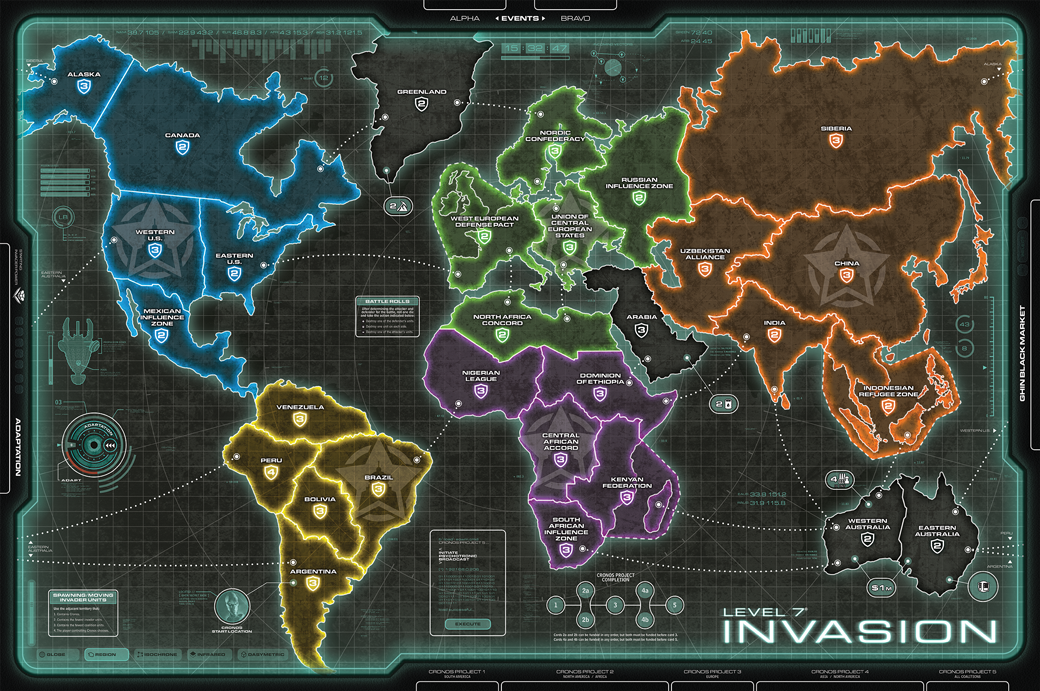
Because we wanted players to feel like they each had to help equally to defend the planet, the map needed to be divided up as equally as possible. This required splitting each continent into territories. I sat down with a map showing only the continents and started thinking. Eventually I took a marker to it and chopped it into pieces. At that point I wasn’t thinking about political boundaries, only what looked like natural divisions. I quickly realized the world doesn’t cut up into a very equal pie.
Luckily, the game is set in a cataclysmic sci-fi future, so I was free to ignore aspects of the real world that would have to be reflected in a historical game. By the end of the process of making the prototype map, I’d consulted some topographical maps, read a bit on regional political predictions, and sprinkled in my own sci-fi concepts of what a world in the midst of an invasion might look like. What emerged from that process looked very much like the board in the final game.
Next, we had some discussions about what we would do with the map. Everyone agreed there should be lots of figures representing the human defenders and the invader forces. We briefly discussed if we would represent ground, air, and sea forces, but we quickly decided abstract simplicity for the warfare would be best.
How the invading forces would move around the map took a bit of testing to determine. The Earth as represented by INVASION still bears the scars of my first idea for the invader spawning and moving process.
At first I thought it would be interesting if the invaders established a beachhead on Earth and spread their forces from there. Conveniently, this also dealt with a problem I was having with the map: what to do with Australia. Australia is a beautiful place full of wonderful people, but when you are dividing the world into relatively even chunks, it can give you issues. It is too small to be on its own and too big to give to someone else or to ignore. My solution was to nuke it. This provided a landing zone for the invading forces and let me get on with conquering the world. As soon as I let the invaders have Australia, the idea of Landing Zones congealed in my head. I decided they would go after a resource-rich region of the world like Arabia, and just so the Western Hemisphere wasn’t left out, they also took over Greenland.
During early playtesting, it became clear that only having invaders spawning from a few Landing Zones wasn’t making things unpredictable enough, so we changed the primary spawning method while keeping the idea that a few areas of the map had been overrun early in the invasion.
That only left the question of what to do with the oceans, and the answer to that also changed a bit during early playtesting. At first, we considered dividing the oceans into territories in the same way we had divided the land. But as the game came together, it became clear we could ignore the oceans and the game would be better for it.
With all of that figured out, we had a map of the world to fight over and could begin tackling other aspects of how the game would work—I’ll explain the player half of the game next week. Until then, enjoy these desktop wallpapers of the LEVEL 7 [INVASION] map.
![]()

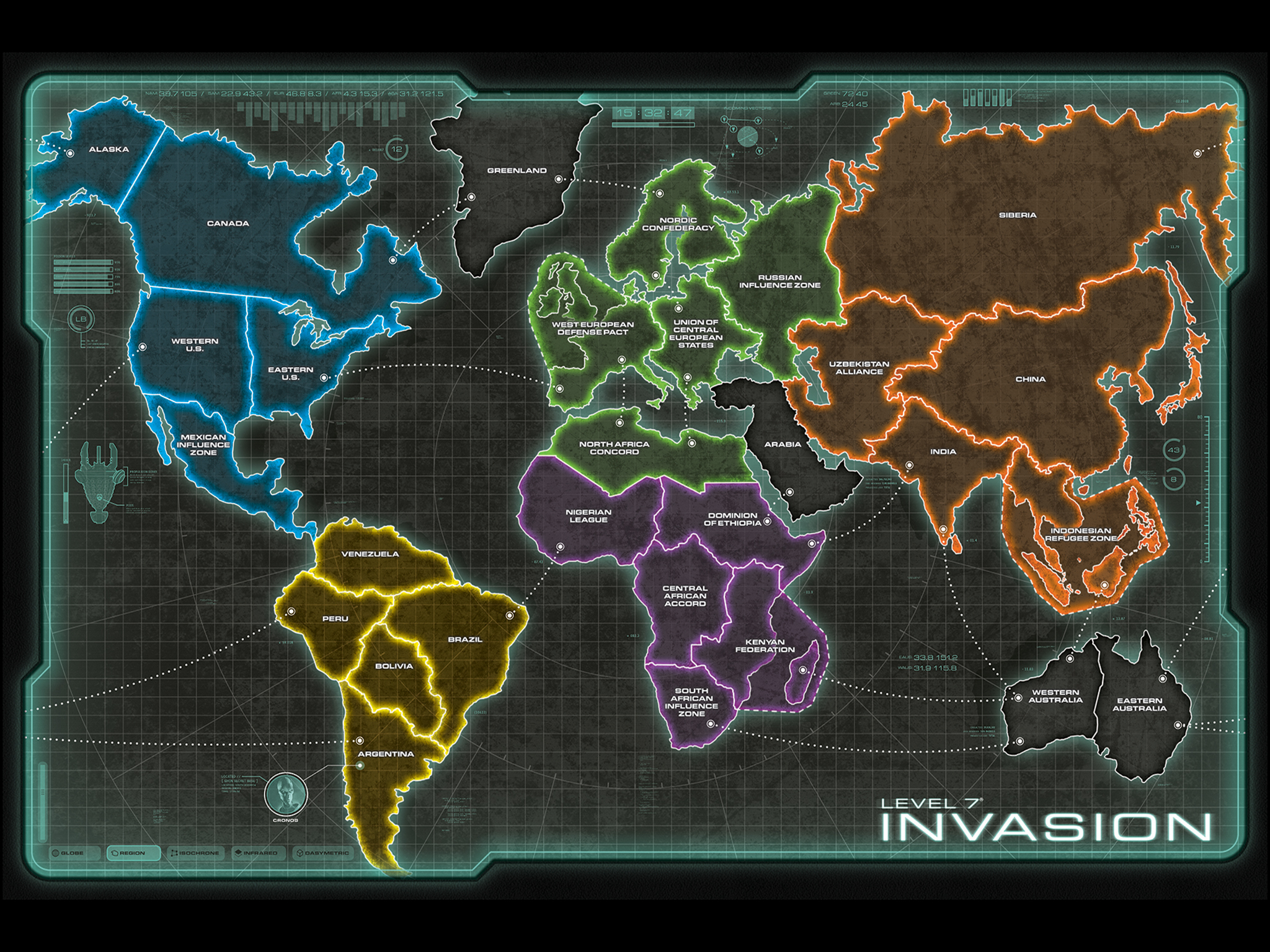 2048×1536
2048×1536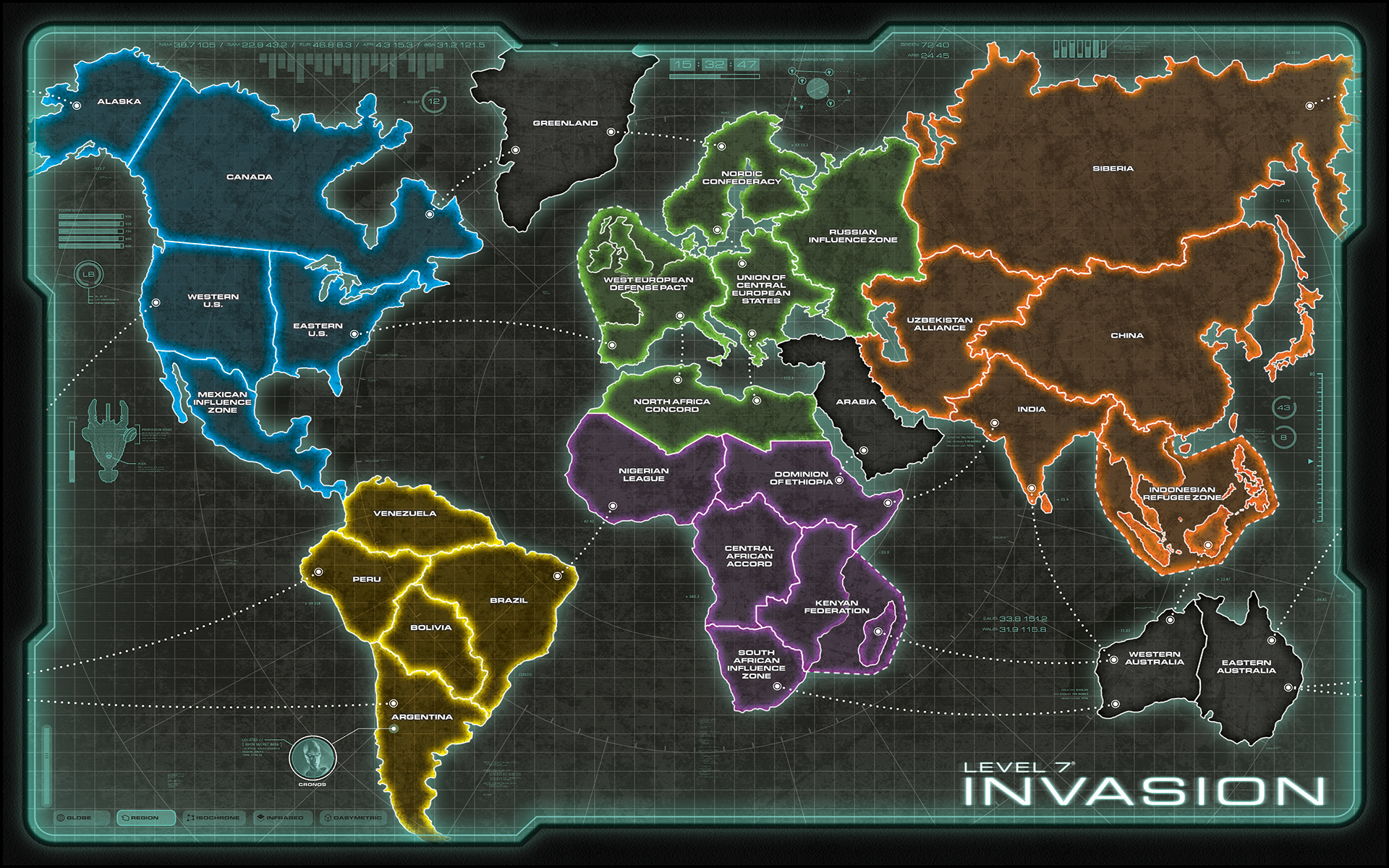 1920×1200
1920×1200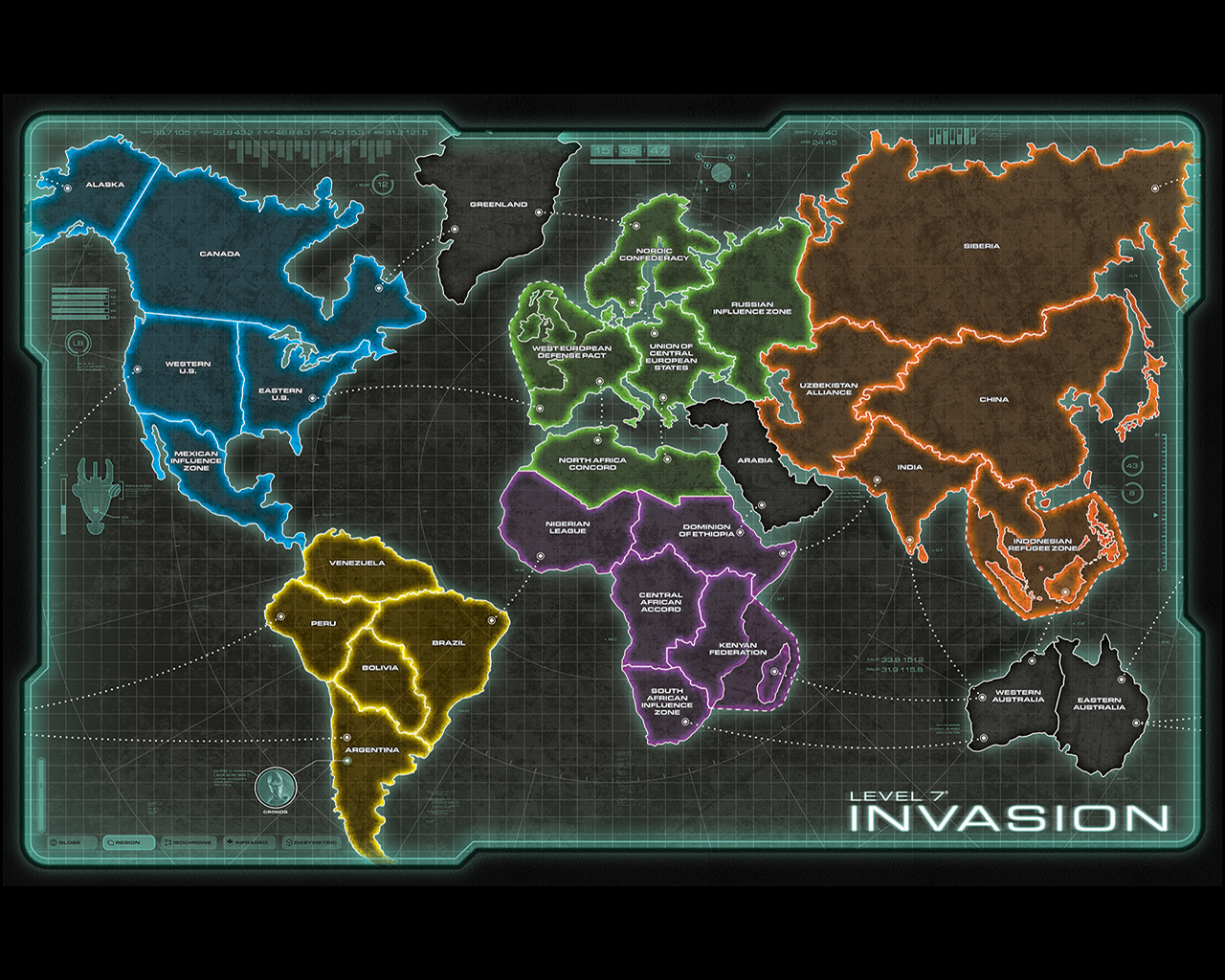 1280×1024
1280×1024